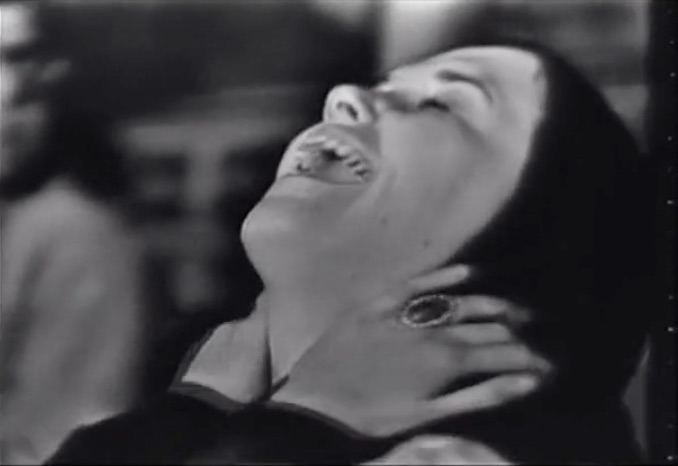Michèle Champagne is a graphic designer who moves between visual research, creative direction, and publication design. She works with publication as a “two-way” conversation, and she meanders through open source dynamics, collaborative authorship, and reader participation. After completing a Masters of Design at Sandberg Instituut Amsterdam in 2011, Champagne is recognized for her collaborations with Droog, Mediamatic, Metahaven, Penguin Random House, Strelka Institute, and VPRO. In 2016 she co-founds A-B-Z.co, an international school dedicated to design, art, and computation. She lives in Montréal.
J2 I know that you’ve trained in graphic design and likely have a very different relationship to visual art than someone with another background, so, I’m curious about what sparked your interest in this collection. Could you discuss what led you to this project?
MC What attracted me to the collection was its contemporary nature: knowing it was specific to the times. My research looks at the vocabulary of the happiness industry, whose latest incarnation is rather novel. To be sure, the industry has a history, anchored in Jeremy Bentham’s panopticon ambitions in the eighteenth century, and in the rise of positive psychology and human resources in the twentieth century. But since the early twenty-first century, we’ve seen the emergence of a new belief that our emotions are objectively knowable, that they can be measured, analyzed, and integrated into workplace strategies, health care strategies, and security strategies. Even audience engagement strategies… so many strategies.
Recently the industry has been welcomed in the heart of global economic management, as happiness indexes at the United Nations and ‘wellness’ gizmos at the World Economic Forum in Davos. The industry also lies at the heart of some of the world’s most powerful computer sciences, like with Facebook’s DeepMask or Google’s TensorFlow algorithms which survey images for smiles, faces, emotions, and so much more. “Our hopes are being strategically channelled into this quest for happiness, in an objective, measurable, administered sense,” writes political economist William Davies in The Happiness Industry, from 2016. “Questions of mood, which were once deemed ‘subjective,’ are now answered using objective data.”
Why is Davos so concerned with our feelings? Why does Facebook study our moods? Feelings. Moods. Emotions. What are we even talking about? Happiness? Or life satisfaction? Individual attitudes? Or social mores? The industry has an answer: happiness is not only scientific but individual, repeating the mantra of positive psychology that happiness is a personal choice. If you’re feeling down, it’s your own fault, and if you want to feel better, it’s up to you to make a change. Well, it’s up to you, your FitBit and MoodPanda, that is. Happiness, the industry says, is a solitary pleasure.
Economists, scientists, and psychiatrists have convinced many of us that happiness is life’s ultimate goal. Why do we let them do that? Why does the search for happiness take precedence over building knowledge? Nurturing compassion? Or any other ideal? The industry’s terms of engagement are questionable and that’s why I’m at Artexte: to ask artists, curators, and writers how they define and interpret the terms. In the book Adrian Piper: Colored People[1]1Anon. (1991). Adrian Piper : Colored People. London, England : Adrian Piper ; s.l. : Book Works., we find participatory photography playing with the “colloquial metaphor of color as mood,” and in the catalogue Ctrl [Space]: Rhetorics of Surveillance from Bentham to Big Brother[2]2Campbell, Duncan , Darnton, Robert , Druckrey, Timothy , Farocki, Harunet , Foucault, Michel , Katti, Christian , Schmidt-Burkhardt, Astrit , Virilio, Paul , Zbikowski, Dörte (2002). Ctrl Space : Rhetorics of Surveillance from Bentham to Big Brother. Karlsruhe, Germany : ZKM Center for Art and Media. we find a seminal genealogy of panoptic art and architecture at the turn of the twenty-first century.
J2 What is it about art documentation that enriches or feeds your investigation into this industry and these terms?
MC If art counters the industrial narrative of psychic life, then art documentation plays a role too. Folie/Culture’s DSM-V+, Dévidoir de syndromes magnifiques[3]3Côté, Benoît , Desmeules, Geneviève , Matte, Hélène (2007). DSM - V +, Dévidoir de syndromes magnifiques. Québec, Qc : Inter Éditeur ; Folie/Culture., (DSM-V+, Reel of magnificent syndromes), from 2006, documents an event by the same name and of the same year. The book is designed as a reader, as a collection of essays, and is laced with colour photographs from the event’s panels and performances. DSM-V+ countered the psychiatric industry’s monumental DSM, or Diagnostic and Statistical Manual of Mental Disorders, along with its normative and prescriptive tendencies.
The book reminds us the industry is not simply there for our own Aristotelian flourishing, but in the service of certain socio-cultural and economic strategies. “To us,” writes editor Alain-Martin Richard, “it seems important to practice within this lively niche, by putting art and madness in parallel, in their respective capacity to invalidate and revolt against normative measures. It seems like that is what the DSM puts its finger on: measuring the world, this desire to confuse the pseudo-scientific humanities with the hard sciences and with the help of digital tools.”
Also interesting: Folie/Culture’s Petit dictionnaires des idées reçues sur la folie et autres considerations[4]4Leclerc, Suzanne , Martel, Christine , Pageau, Yvan , Simard, Danielle (2001). Petit dictionnaire des idées reçues sur la folie et autres considérations. Québec, Qc : Folie/Culture. (A little dictionary of misconceptions about madness and other considerations), from 2001. It offers an absurdist and alphabetical guide through psychiatry’s labyrinthian terminology.
J2 Is there something you think belongs in the collection that you didn’t find? Anything you think that could enrich this kind of analysis in art practices?
MC What is missing is the documentation of art that addresses the happiness industry particularly. A great deal has changed since George Orwell outlined Big Brother in 1984. Today, Psychopolitics[5]5Byung-Chul, Han (2017). Psychopolitics : Neoliberalism and New Technologies of Power. New York, NY : Verso. goes beyond ‘biopolitics,’ ‘digital healthism’[6]6Beattie, Alex (2018). Out of Network : Controlling workers by controlling their technology use. Real Life. is a thing, and both public and private organizations exploit the most intimate details of our mental lives and put them to use for their own strategies. Facebook is an obvious example. They not only lend and sell our psychological profiles to third parties, but they also went above and beyond the PRISM[7]7McLaughlin, Jenna (2015). Top European Court Rules that NSA Spying Makes U.S. Unsafe for Data. The Intercept_. requirements set by National Security Agency, as Edward Snowden revealed in 2013. This is now the business of everyday life.
Traditionally, artistic concerns about surveillance have been framed by the rhetoric of security, the self, and identity. Or, surveillance is seen as something framed by voyeurism, pleasure, or entertainment. The popularity of the Big Brother television series comes to mind, as well as Bruce Nauman’s Going Around The Corner Piece, from 1970, and Sophie Calle’s The Shadow (Detective), from 1985. The Ctrl [Space] catalogue covers all of these terrains.
What is missing, however, is documentation of art that confronts the kind of surveillance that scans and senses our smiles, screams, and gamma waves with the promise to increase our happiness, health, and well-being. If some of us still believe there are limits to how much our lives should be measured and administered, there must also be limits to how much positive psychology we can possibly opt for. Any study of ubiquitous surveillance must now include a look at happiness pseudo-science and the do-good, be-well sentiments that so cleverly immunize it.
Suggestions for the collection: Giuliana Bruno’s Atlas of Emotion: Journeys in Art, Architecture, and Film, from Verso Books, 2018. Julia Bryan-Wilson, Lauren Cornell, and Omar Kholeif’s Trevor Paglen monograph, from Phaidon, 2018. Hito Steyerl’s Duty Free Art: Art in the Age of Planetary Civil War, also from Verso Books, 2017. I’d also love to see Metahaven’s films The Sprawl (Propaganda about Propaganda), from 2015-16, and Information Skies, from 2017. Both films looks at how digital platforms can push our emotional limits and challenge our ability to perceive truth from falsity.
J2 One last question, what is the most surprising thing you’ve experienced or discovered during this residency?
MC Jo-Anne Balcaen’s video Screaming Girls[8]8Balcaen, Jo-Anne (2005). Screaming Girls. s.l. : Jo-Anne Balcaen., from 2005. The silent video borrows from footage of teenage girls at rock concerts in the nineteen sixties. At first we see the girls’ simple smiles of joy and wonder, which then escalate into a frightening fury of screams. Even bodies shaking uncontrollably. Are the girls happy or hysteric? Out of curiosity, I’d love to run Microsoft’s emotion recognition software on the video.



















